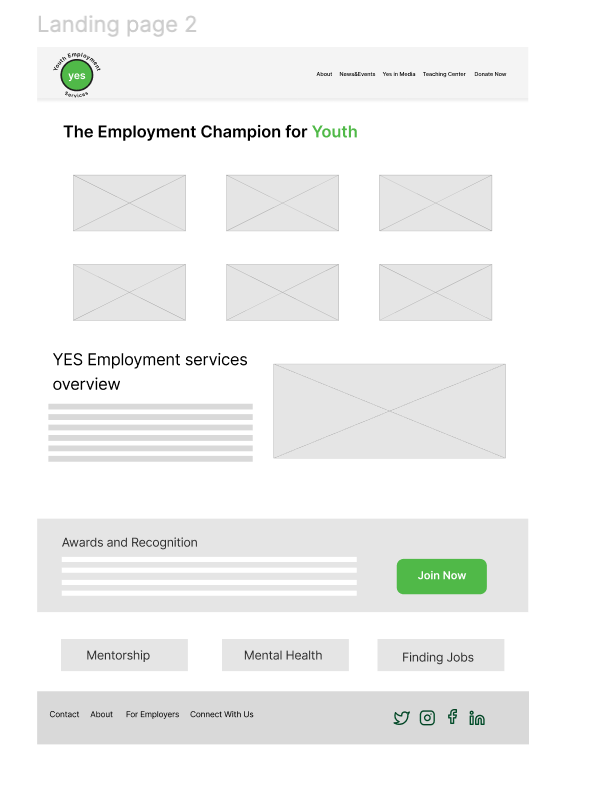Client: YES Employment
Sector: Education, Social Impact
My Role: Redesign (Research, Wireframing, Interface Design, Front-End Development)
Project Time: 4 months
-
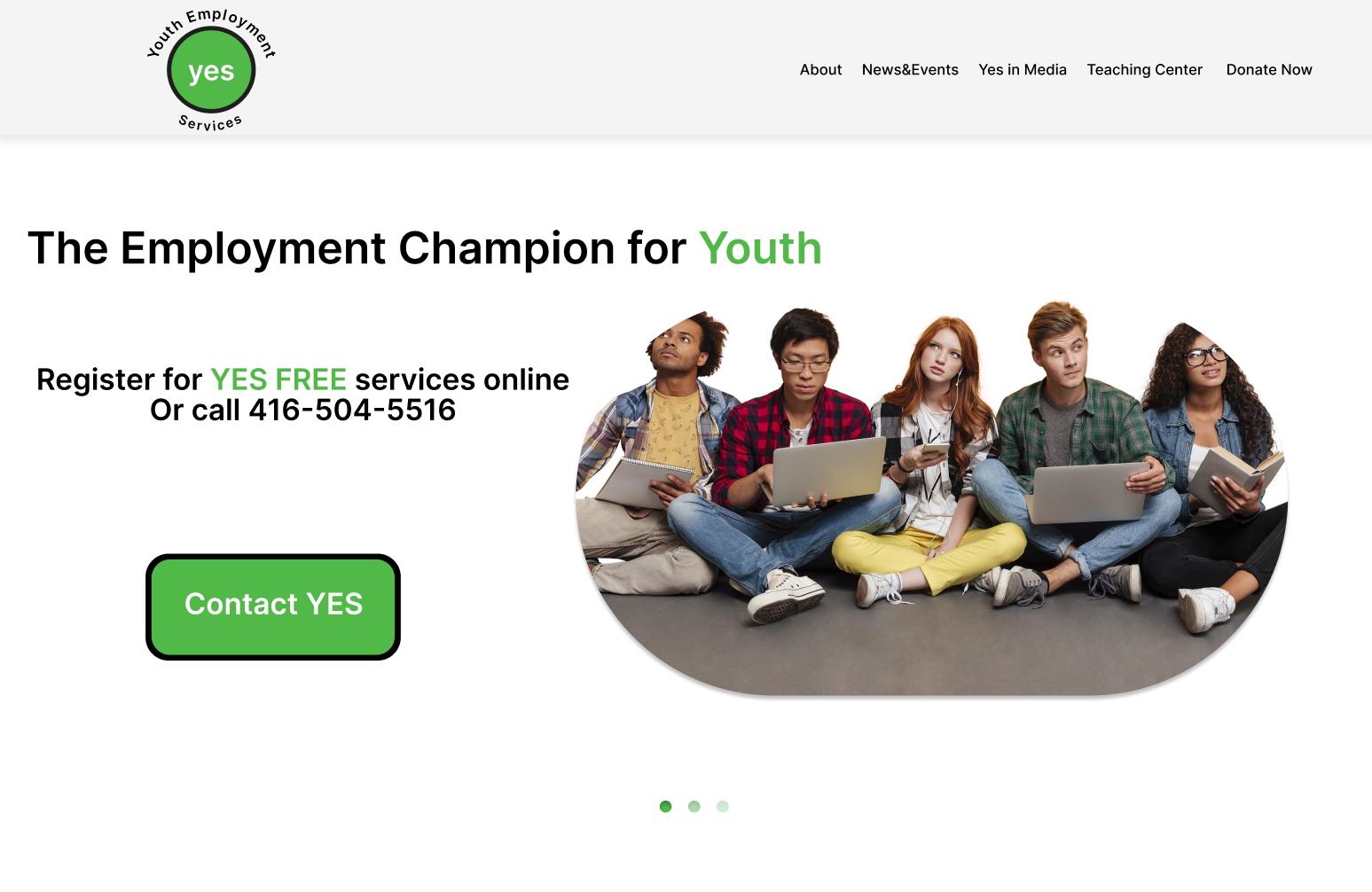
Research:
The research process for redesigning YES services involves leading a comprehensive, end-to-end discovery and contextual research phase to deeply understand the needs, motivations, and experiences of all users. This process will focus on gaining an “outside-in” perspective to ensure a customer-centric approach. The research will include a variety of methods, such as interviews, journey mapping, and ethnographic observation, to align the service design and user experience with the actual needs of youth participants, mentors, and other stakeholders.
We will ensure the quality and rigor of all research efforts and continuously strive to improve our research practices. This will involve conducting multiple overlapping research engagements, often utilizing challenging methodologies and collaborating with external partners when necessary. Additionally, our process will incorporate both qualitative and quantitative data analysis to uncover key insights, patterns, and actionable recommendations.
A central data repository will be maintained to capture and track all research findings, making them shareable, traceable, and easily accessible for the team. This repository will provide a clear overview of the data to track progress and outcomes over time. Ultimately, our goal is to translate research findings into prioritized, actionable recommendations that inform the redesign of YES services, ensuring they remain aligned with the evolving needs of youth and contribute to their long-term success.Interviews:
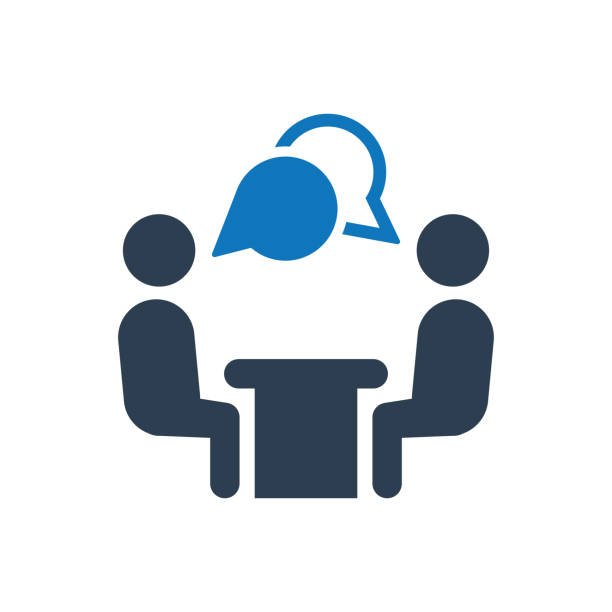
To gain a comprehensive understanding of the experiences and needs of youth participants, mentors, and employers within the YES programs, I conducted a series of structured one-on-one interviews. These interviews were designed to dive deep into participants’ personal experiences with the programs, focusing on their challenges, successes, and overall satisfaction. The interview process also included open-ended questions that encouraged participants to share their thoughts on the most impactful aspects of the services and any areas they felt could be improved.
I recruited a diverse group of interviewees, including youth participants from various program tracks, such as Youth Job Connection, BizStart, and the YES-Lighthouse Program, as well as mentors and employers who work closely with YES. Interviews were conducted in person and virtually, depending on availability, and were structured to allow for both qualitative insights and actionable feedback.
The results revealed several key findings:- Youth Challenges: Many youth participants expressed difficulty navigating the initial stages of employment, particularly when it came to resume building, interview preparation, and understanding workplace expectations.
- Impact of Mentorship: A significant number of youth highlighted the value of mentorship programs in building confidence and providing career guidance, with many requesting more personalized and ongoing support.
- Barriers to Access: Some youth reported that they were unaware of certain services or faced challenges in accessing digital tools and training due to limited internet access or lack of digital literacy skills.
- Employer Feedback: Employers who participated in the interviews shared that while YES provides a strong talent pool, there is an opportunity to improve alignment between the skills of youth and the specific demands of employers, particularly in emerging industries like technology.
Based on these findings, the interviews provided valuable insights into the areas of improvement for YES programs. It also highlighted the need for further personalization in training and a stronger focus on digital literacy and skills matching for employers. These insights will guide the redesign process to better meet the needs of all stakeholders involved.
- Youth Challenges: Many youth participants expressed difficulty navigating the initial stages of employment, particularly when it came to resume building, interview preparation, and understanding workplace expectations.
Project Purpose
This project aims to redesign the YES Employment platform by enhancing user experience through research-driven insights. The goal is to improve accessibility, personalize training, and better align services with job market needs.
Wireframes
The purpose of the landing page wireframe was to create a clear, user-friendly design that effectively guides youth participants, mentors, and employers to key YES services. In the first two initial designs, some cluttering made navigation confusing, so I opted for a simpler layout with a structured flow to enhance clarity and usability.
The purpose of the landing page wireframe was to create a clear, user-friendly design that effectively guides youth participants, mentors, and employers to key YES services. In the first two initial designs, some cluttering made navigation confusing, so I opted for a simpler layout with a structured flow to enhance clarity and usability.
I chose the final design based on research insights, as many program participants felt overwhelmed by the content on the page, prompting a simpler, more structured layout for better clarity and navigation.

Client mapping experience chart
Identifies user needs, pain points, and opportunities at each stage of their journey, ensuring a more seamless and supportive experience with YES programs.

Personas:
The personas guided my design decisions by highlighting key user challenges, such as job search frustrations and skill development needs, ensuring the platform’s features directly addressed their goals.

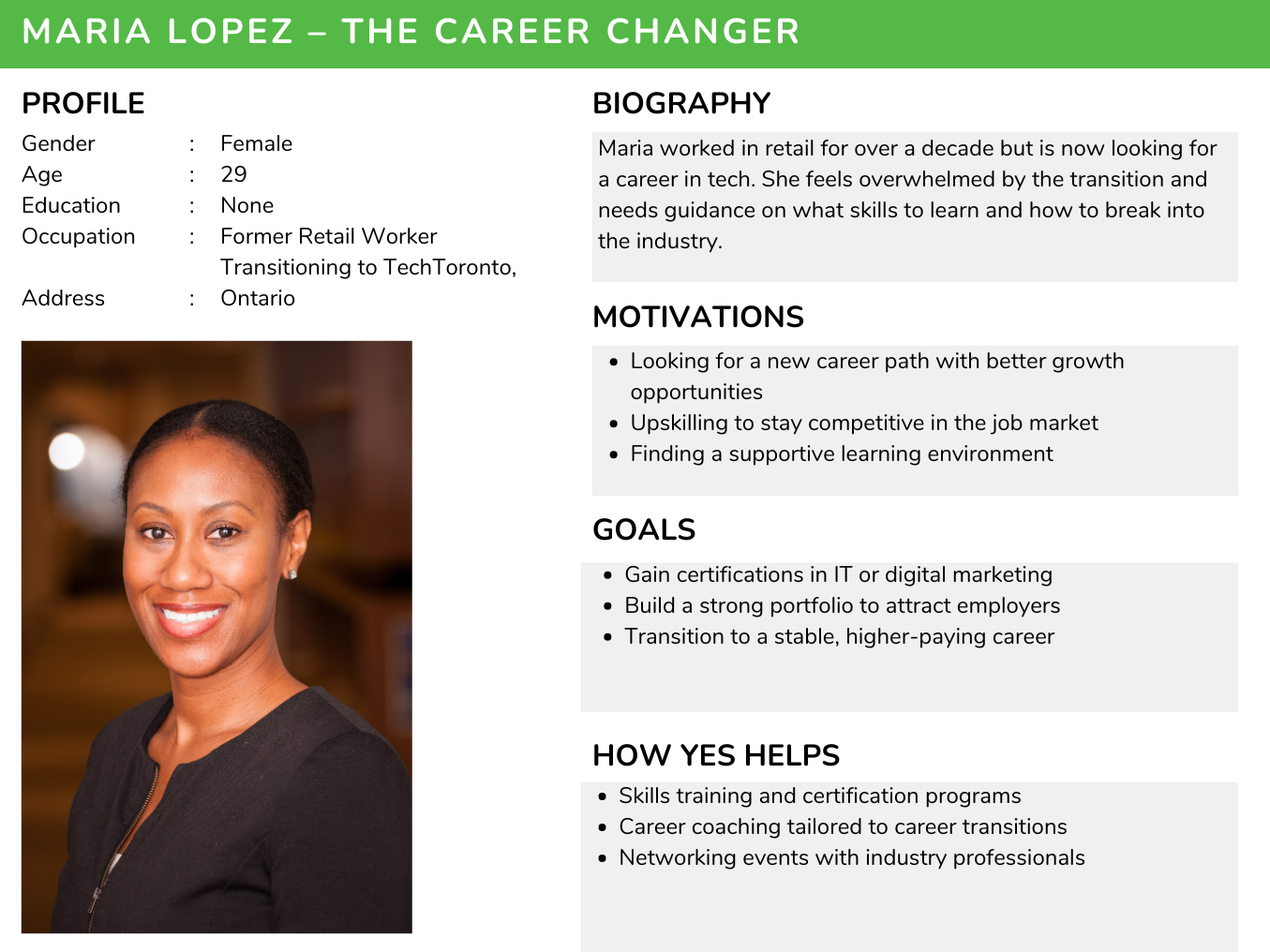
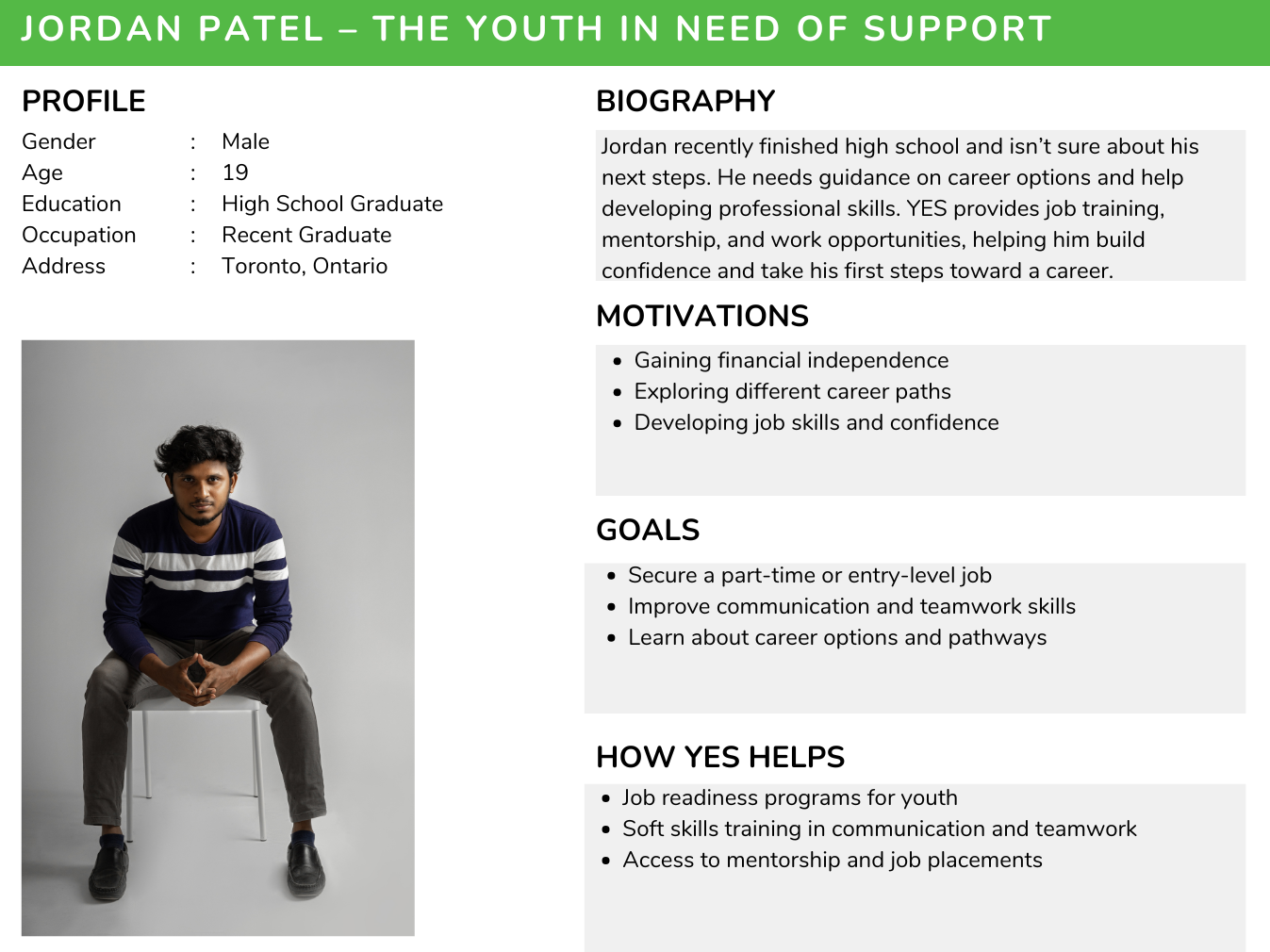
Redesign Elements:
I redesigned the five navigation pages to enhance clarity, usability, and accessibility. The previous structure made it difficult for users to find key information quickly, so I streamlined the layout, simplified the language, and improved visual hierarchy to create a more intuitive and user-friendly experience.
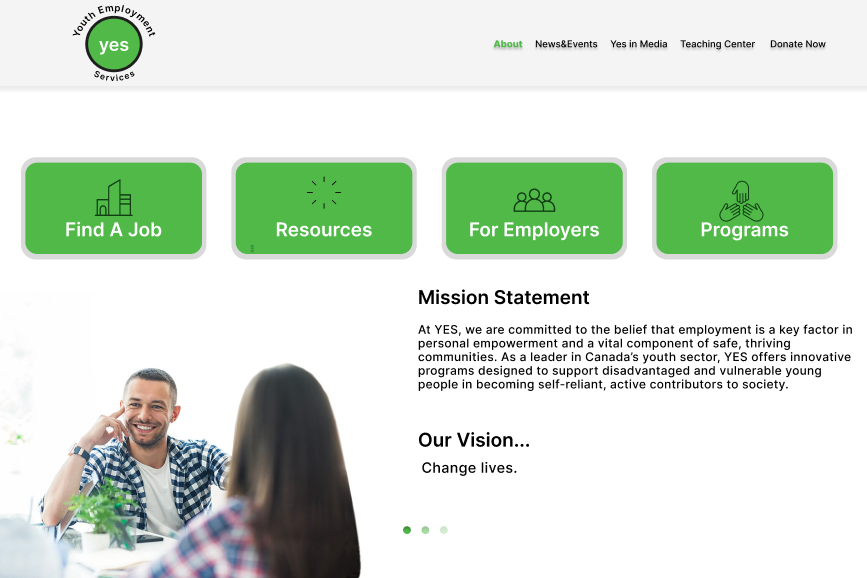



Conclusion:
The research and ethnographic observations provided a deep understanding of the challenges and needs of youth participants, mentors, and employers within the YES programs. Key insights highlighted the importance of clearer guidance, personalized mentorship, and improved digital accessibility. These findings will directly inform the redesign, ensuring a user-centered approach that enhances engagement, streamlines access to resources, and better aligns training with employer expectations, ultimately driving greater success for all stakeholders.

